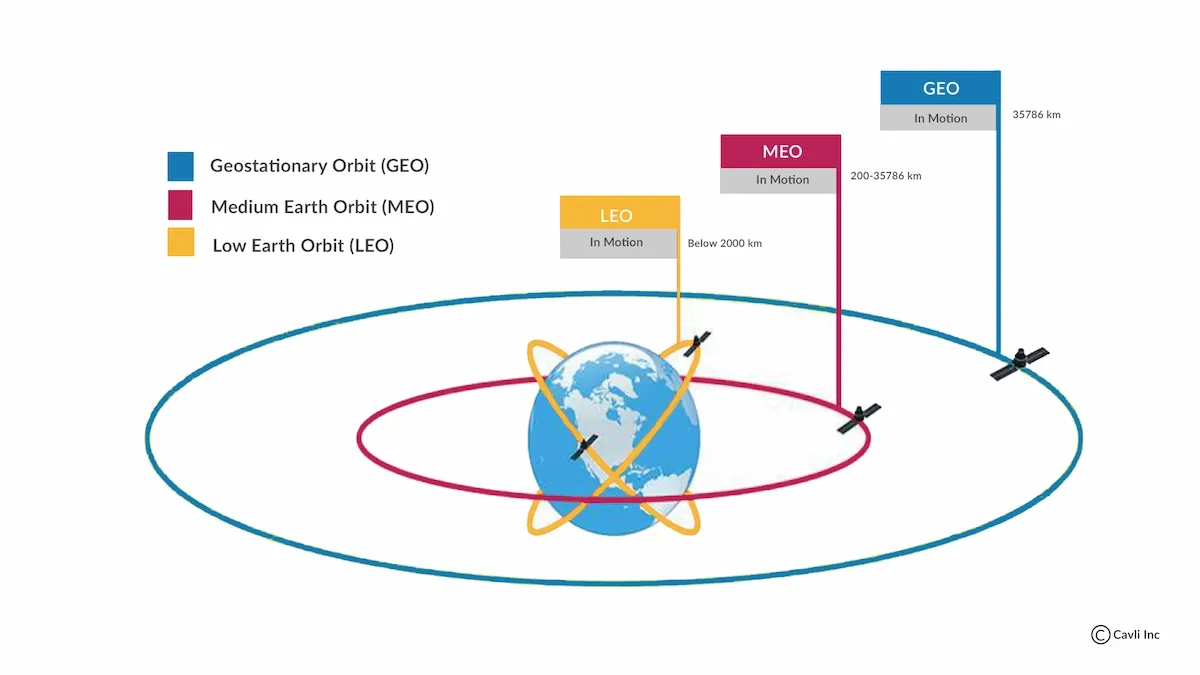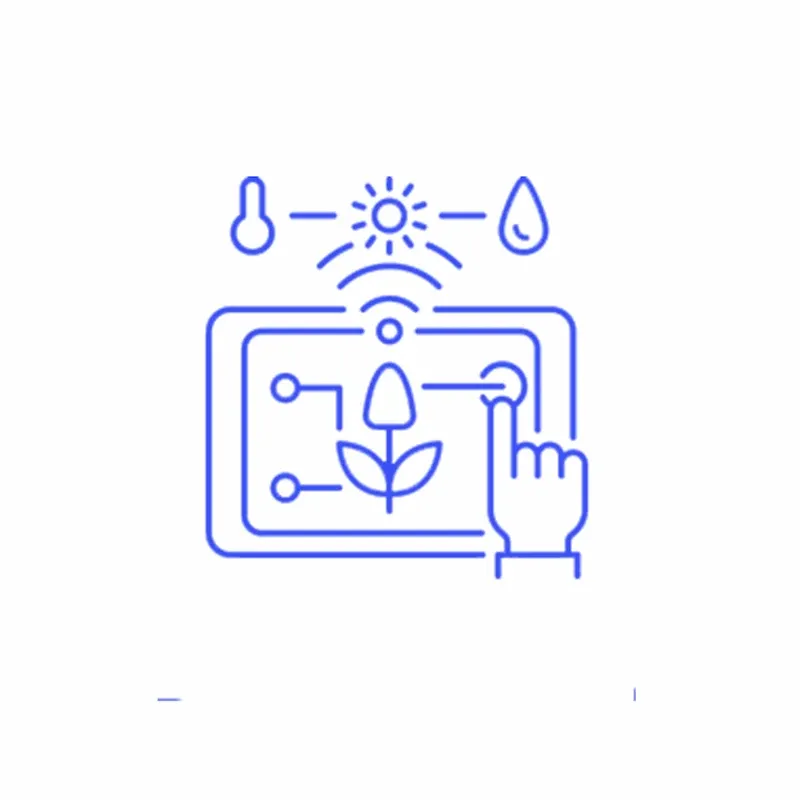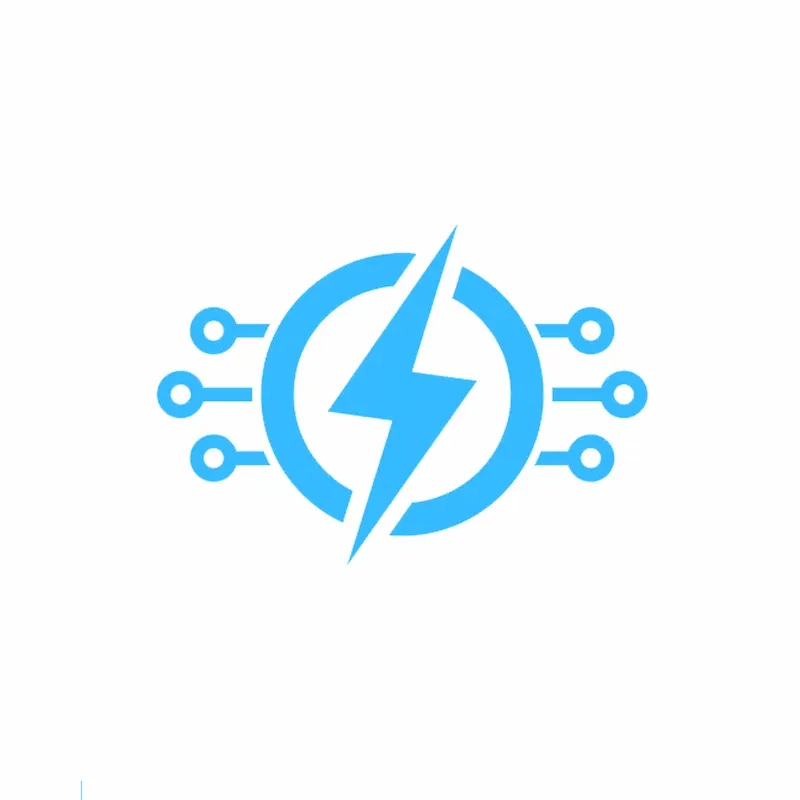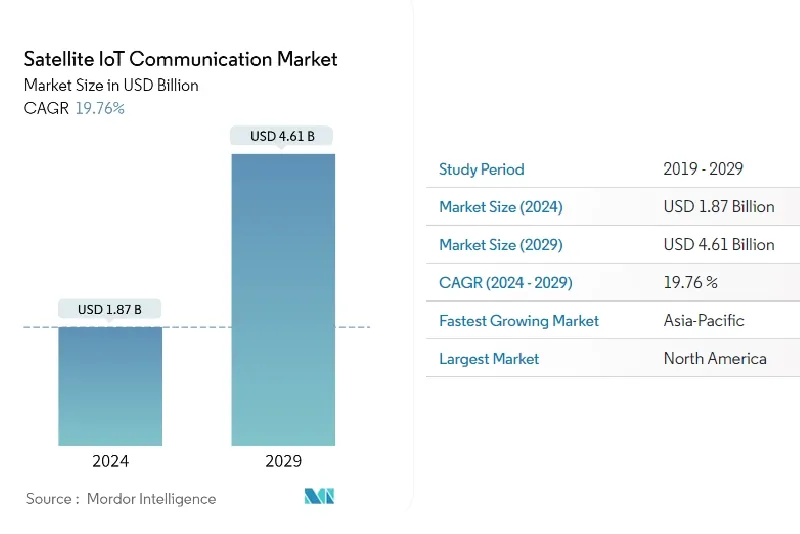In the rapidly evolving landscape of Internet of Things (IoT) technology, two major connectivity solutions have emerged as pivotal players: Cellular IoT and Satellite IoT. As businesses and industries increasingly rely on IoT for critical data analysis and remote monitoring, the debate on whether cellular and satellite IoT will coexist or compete, and how to choose cellular IoT or Satellite IoT for specific applications have taken center stage.
The main concerns circumferencing in this domain include whether these two technologies complement each other to create a more robust IoT network and what are the challenges in harmonizing these technologies in terms of interoperability, cost, and infrastructure.
These real-life questions need to be addressed as IoT continues to drive innovation and efficiency across various sectors. In this blog, let us understand the dynamics and potential synergies between cellular and satellite IoT. Delve into sections
- What is Cellular IoT?
- Types of Cellular IoT Networks
- What is Satellite IoT?
- Types of Satellite IoT Networks
- Major Players in Satellite IoT
- Cellular IoT, Satellite IoT or HTSN: Which One to Choose?
- Comparison between Cellular IoT and Satellite IoT
- Use cases involving Satellite IoT and Cellular IoT
Let's understand how the hybrid connectivity will suit your business needs and provide the best optimum result across your domain.
What is Cellular IoT?
Cellular IoT capitalizes on the robust infrastructure of cellular networks to enable seamless machine-to-machine (M2M) communication and provide stable internet connectivity to a wide range of Internet of Things (IoT) devices. Utilizing the extensive coverage of cellular wireless networks, Cellular IoT ensures that devices across diverse sectors maintain reliable, uninterrupted, and effective connectivity. This technology is integral to powering a variety of applications, from industrial automation and remote healthcare monitoring to smart city solutions and advanced asset tracking, making it a cornerstone of modern IoT ecosystems.
Cellular IoT utilizes sophisticated cellular network technologies, employing the same cell towers that support the ubiquitous cellular services of voice and data communication for mobile devices. This setup is crucial for IoT applications that require broad coverage and substantial data transfer capacities, such as managing heavy machinery, monitoring security surveillance systems, overseeing health monitoring devices, and implementing complex asset tracking frameworks. The adoption of cellular technologies in IoT not only provides robust connectivity but also enhances the reliability and effectiveness of these services through established cellular networks.
Types of Cellular IoT Networks
The Global System for Mobile Communications (GSMA) is the globally adopted standard for cellular communication. The cellular networks have exponentially developed from 2G, 3G, and 4G, to 5th Generation- 5G NR and 5G RedCap -the technology that most industrial people look forward to. LPWAN technology is also a major technology in connecting IoT devices that requires minimal power. This low-power wide area network is great for sending bits of data, like sensors readings, making it ideal for massive IoT with low power consumption.

Types of Cellular Networks
2G
The second generation (2G) served us for three decades. 2G connectivity deployments are simple, affordable, and easy to implement. 2G cellular networks were implemented for logistics, telematics, and supply chain management applications where devices transmit basic alerts, status updates, and location data with less power consumption.
3G
3G cellular IoT networks provide faster data transmission. 3G facilitates more advanced processes like file sharing, streaming, analytics, and remote device management with Universal Mobile Telecommunications System. It is commonly used in consumer IoT devices and smart grids.
4G
4G LTE (long-term evolution) is capable of accommodating more sophisticated IoT solutions. 4G network data speeds are 10x faster than 3G. Using 4G LTE technology, cellular IoT devices can make low bandwidth voice calls (VoLTE), and enable video conferencing facilities. It is widely used in security cameras, healthcare, and car infotainment systems.
LPWAN Technologies
Low Power Wide Area Networks are wireless networks designed to allow long-range communication between IoT devices at low data rates and low power consumption. LPWANs enable periodic updates, or send updates in response to external triggers, eliminating the need for maintaining a continuous connection between devices. The LPWAN technologies also offer the critical advantage of offering a longer battery life (up to 10 years when operated under ideal conditions) for low-power battery operated IoT devices. LPWAN is a collective set of technologies like SigFox, LoRa, NB-IoT, LTE-M, etc. Here NB-IoT and LTE-M are the popular cellular LPWAN technologies.
NB-IoT
Narrowband IoT uses guard bands (unused frequencies) in the radio frequency spectrum to provide efficient connectivity and prevent interference. It features two power-saving initiatives: power-saving mode (PSM) and discontinuous reception (DRX). PSM puts the device to sleep when not in use, while DRX extends the time that the device is not actively listening for a signal, increasing the battery life significantly. NB-IoT (Narrowband IoT) can provide data rates from 20 kbps to 250 kbps with transmit power ranging between 20-23 dBm. To know more, refer to our blog on NB-IoT.
LTE-M
LTE-M is short for long-term evolution machine-type communication. It connects IoT devices to 4G networks, providing a larger bandwidth and mobility than NB-IoT. LTE-M devices can enter PSM and eDRX (Extended Discontinuous Reception) modes similar to NB-IoT for power saving, but the display slightly higher power consumption in active modes. The advantage of LTE-M is higher throughput and lower latency. In addition, it also supports VoLTE—a more advanced voice service.
5G
5G (5th generation mobile network) is the new global wireless standard after 4G networks. 5G technology, with a peak speed of 20 Gbps, is all set to outperform 4G networks (1 Gbps). 5G wireless technology delivers peak data speeds, lower latency, more reliability, and massive network capacity, streamlining IoT businesses and other digital experiences such as online gaming, videoconferencing, and autonomous cars. The two derivatives of 5G networks - 5G NR and 5G RedCap are all prepared to bridge the gaps in the existing cellular networks and build an efficient connected ecosystem. To know more, read more on our blog on 5G NR and 5G RedCap.
Advantages of Cellular Technologies in IoT
The deployment of cellular network technologies in IoT not only provides a robust framework for connectivity but also extends a wide range of cellular services, facilitating the remote and autonomous operation of IoT devices with unprecedented efficiency. In the healthcare sector, cellular IoT is a game-changer, connecting critical health monitoring devices to enable the real-time transmission of patient data to medical professionals. This immediate data flow allows for quick medical response and continuous patient monitoring, crucial for chronic condition management and emergency medical scenarios. Similarly, in industrial settings, cellular technologies transform operational protocols by allowing businesses to remotely monitor and control heavy machinery. This capability significantly enhances operational efficiency, minimizes downtime, and bolsters worker safety by reducing the need for human presence in potentially hazardous environments. Additionally, in the realm of agriculture, cellular IoT supports precision farming techniques, enabling farmers to monitor soil conditions and crop health remotely, thus optimizing water usage and pesticide application, leading to increased crop yield and reduced environmental impact.
Impact of Cellular Network Technologies on IoT
Advancements in cellular network technologies have drastically enhanced the scalability and security of IoT networks, making them more adaptable and robust. Innovations such as LTE-M and NB-IoT are at the forefront of this transformation, designed specifically to meet the unique requirements of IoT applications. These technologies offer significant advantages such as reduced power consumption, which is crucial for devices deployed in remote areas without regular maintenance. Additionally, they provide an extended operational range, which is essential for rural IoT applications such as agricultural sensors and wildlife tracking systems. Better signal penetration in urban environments ensures that IoT devices can operate effectively in suboptimal conditions, such as underground or in buildings, facilitating urban infrastructure monitoring and smart city applications. The continual evolution of these cellular technologies is pivotal in enhancing the reliability and efficiency of IoT devices, thereby enabling a more connected and responsive environment across various sectors.
What is Satellite IoT?
Satellite IoT, a pivotal component of Non-Terrestrial Networks (NTN), has gained immense popularity for its ability to provide reliable connectivity through LEO (Low Earth Orbit) and GEO (Geostationary Orbit) satellite networks. This technology is especially crucial for enabling connectivity in areas where terrestrial networks—such as cellular connectivity networks—are absent or unreliable. By leveraging satellite networks, Satellite IoT ensures continuous global coverage, bridging the connectivity gaps often encountered in remote, rural, or maritime environments.
Satellite IoT is instrumental in extending connectivity to the most isolated locations on the planet. In remote areas like deserts, high mountains, and extensive forest regions, where cellular networks fail to reach, satellite IoT steps in to offer vital communication links. This is crucial not only for basic communication but also for critical applications such as emergency response, environmental monitoring, and scientific research in these hard-to-reach places. Furthermore, in maritime settings, where ships and offshore platforms operate far from any cellular network's reach, Satellite IoT provides the necessary tools for navigation, weather forecasting, and distress signaling—enhancing safety and operational efficiency at sea.
Types of Satellite IoT Networks
There are three main types of satellite networks that are used for satellite IoT connectivity. They are
- Low Earth Orbit (LEO)
- Medium Earth Orbit (MEO)
- Geostationary Orbit (GEO)
Each orbit is distinguished based on its height, where they are situated, and its ground coverage. Some among these are stationary, while others revolve in the orbit around the Earth.

Types of Satellites
LEO Satellites
Leo satellites revolve around Earth every 90 minutes and cover a smaller area. This is because they are closer to the Earth's surface, typically ranging from about 160 to 2,000 kilometers (100 to 1,240 miles) above Earth. The latency for LEO satellites can be as low as 5 milliseconds (ms) ideally but round-trip time (RTT) typically falls in the range of 20 to 40 milliseconds.LEO constellations are used for global broadband internet services (e.g, Starlink, OneWeb). It can be used in precision agriculture, asset tracking, environmental monitoring, and maritime and logistics applications.
MEO Satellites
Medium Earth Orbit (MEO), also known as Intermediate Circular Orbit, is a region of space around the Earth that lies above Low Earth Orbit (LEO) and below Geostationary Orbit (GEO). MEO satellites orbit at distances from about 2,000 kilometers (1,240 miles) to 35,786 kilometers (22,236 miles) above the Earth's surface. MEO satellites have higher latency than LEO satellites due to their greater distance from the Earth. The RTT latency for MEO satellites is generally in the range of 100 to 150 milliseconds. They are often used for navigation (e.g, GPS, Galileo, GLONASS) and helps to enhance wide-area tracking applications, such as fleet management, aviation navigation support, and global asset tracking.
GEO Satellites
Geostationary Earth Orbit (GEO) is a circular orbit located approximately 35,786 kilometers (about 22,236 miles) above the Earth's equator and following the direction of the Earth's rotation. Satellites in this orbit have the distinctive characteristic of remaining stationary relative to a point on the Earth's surface. They cover a vast area providing suitable coverage for large-scale communication broadcast services, fixed satellite services, and wide-area internet coverage. The latency for GEO satellites is the highest, 240-270 ms due to its high altitudes. It can be leveraged in weather monitoring, environmental observation, and fixed asset monitoring in specific regions, such as oil and gas pipelines or critical infrastructure.
Major Players in the Satellite IoT Market
According to Mordor Intelligence Research, the satellite IoT market size valued at USD 1.87 Billion in 2024 is expected to showcase a CAGR of 19.76% to reach USD 4.61 Billion in 2029.
The major satellite IoT connectivity companies based on their contribution since its inception are
- Iridium Communications Inc - United States:
Founded in 1997, it is one of the trusted and reliable satellite companies with 66 active LEO satellites. - Orbcomm - United States:
With 31 active satellites in the LEO orbit, ORBCOMM OG2 is the world's first commercial satellite network dedicated to M2M and IoT applications - Inmarsat Global Limited - UK:
Founded in 1979, Inmarsat is one of the largest and most experienced satellite operators in the world with a mixed fleet of 14 GEO, 5 HEO, and 2 MEO active satellites. - Globalstar Inc - United States:
Globalstar is a leading provider of mobile satellite services with 48 Low Earth Orbit (LEO) satellites - SpaceX (Starlink) - United States:
SpaceX is a new entrant (2015) to the market but has quickly become a major player with its ambitious Starlink constellation (over 4000 active satellites)
Intelsat(United States), Thuraya Telecommunications Company(United Arab Emirates), SES S.A (Luxembourg), Eutelsat Communications (France), Telesat (Canada), Astrocast (United States), Swarm Technologies(United Kingdom), Kepler Communications(Canada), China Satcom(China), Skylo(United States), Fleet Space Technologies(Canada), Hiber (Ireland), Myriota (Australia), OmniSpace (United States), and Lacuna Space(Netherlands) are other major players we look up to in this satellite IoT segment.
According to the latest statistics by Nano avionics, by 3rd January 2024, there are 8377 active satellites in the Earth’s orbit. In the three sections, the small satellites are concentrated in LEO( 84%) while the large satellites are in the GEO orbits (12%). This is because the orbits LEO and GEO are easier to reach, and radio signals take much less time to travel. Thus, low-orbiting communications satellites are used in communication, especially for seamless internet service. It also helps in IoT communication, imparting efficient communication between devices.
(Note: The total count of satellites is subject to changes due to decommissioning and recent launches.)

Major Satellite Operators
Cellular IoT, Satellite IoT or Hybrid Satellite-Terrestrial Connectivity:
Which One to Choose?
Cellular and satellite IoT technologies offer distinct connectivity solutions tailored to the diverse needs of the IoT ecosystem. Cellular IoT devices leverage the widespread and evolving cellular connectivity network infrastructure, like 4G/LTE and 5G, to provide high-bandwidth and low-latency communication ideal for urban and suburban environments where real-time data exchange is crucial. However, it faces limitations in rural or remote areas due to coverage blackouts and tends to consume more power. On the other hand, satellite IoT solutions emerge as a robust alternative, offering global coverage and reliability that benefit remote accessibility applications where terrestrial networks fall short. Despite its advantages in coverage and scalability, satellite IoT is constrained by higher latency, lower bandwidth, and generally higher costs compared to cellular IoT solutions.
Hybrid Satellite-Terrestrial Networks
Hybrid satellite-terrestrial connectivity, also known as HTSN (Hybrid Satellite-Terrestrial Network), combines the strengths of both satellites and terrestrial networks (like cellular or fiber optic) to overcome their individual limitations and provide users with wider coverage, higher data rates, and better reliability. Hybrid Satellite-Terrestrial Networks play a crucial role in bridging connectivity gaps by delivering internet access to remote, and rural regions, like maritime zones. These networks ensure dependable communication for vital services such as emergency response, transportation, and various industrial activities. Additionally, they offer high-speed internet and multimedia services, enabling activities like streaming, video conferencing, and online gaming in locations where traditional connectivity methods fall short.
The choice between these three hinges on application-specific requirements such as coverage, data rate needs, latency tolerance, power consumption, and budget, making each technology indispensable for scenarios like maritime applications within the vast IoT landscape.
Comparison Between Cellular IoT and Satellite IoT
| Factor | Cellular IoT | Satellite IoT |
|---|---|---|
| Coverage | Mostly global, but with gaps in rural and remote areas. | Worldwide, including oceans, polar regions, and remote areas. |
| Cost to OEMs | Low to moderate; depends on volume. Modules: $7-$100 each. | High; Satellite modems cost: $100-$1,000+ depending on capabilities. |
| Power Consumption | Low; optimized for battery life with technologies like NB-IoT. | Generally higher due to the need for sending signals to satellites. |
| Global Infrastructure Requirement | Extensive; relies on cellular towers and ground infrastructure. | Limited to ground stations and satellite networks; less ground infrastructure required. |
| Data Transfer | Moderate to high speed (Kbps to Gbps). | Lower speed (bps to Kbps), higher latency. |
| Latency | Low (milliseconds to seconds). | High (seconds to minutes), depending on the satellite network. |
| Mobility Support | High; seamless handover between cells. | Varies; some systems support mobility, but with potential delays in handover. |
| Scalability | High; can support a large number of devices with cellular network expansion. | Moderate; limited by the number of satellites and available frequencies. |
| Initial Setup Cost | Lower; infrastructure is largely in place. | Higher; requires launching satellites and setting up ground stations. |
| Operational Cost | Variable; based on data usage, subscription fees. | Generally higher; includes costs for satellite usage and data transmission. |
| Deployment Time | Faster; leverages existing cellular networks. | Longer; requires satellite launches and setup of supporting infrastructure. |
Additional Considerations:
- Cost to OEMs and Operational Cost: These costs can fluctuate greatly depending on the specific application, volume, and contractual agreements with service providers.
- Data Transfer Rates and Power Consumption: These are closely linked to the specific technologies used within the broader categories of Cellular IoT (like LTE-M, NB-IoT) and Satellite IoT (like GEO, LEO, and MEO satellite systems).
- Global Infrastructure Requirement: Cellular IoT relies on a pre-existing, extensive infrastructure, which is constantly being upgraded. Satellite IoT's infrastructure is more specialized and expensive to develop but offers coverage in areas not feasible for cellular networks.
Above table provides a general overview, but for specific projects or applications, it's crucial to delve deeper into the capabilities, costs, and technical specifications of the particular solutions under consideration.
Industries using Cellular IoT and Satellite IoT

Precision Farming and Livestock Management
Satellite IoT and Cellular IoT enable unprecedented levels of precision in smart agriculture, allowing for real-time monitoring and management of crops and livestock across vast and remote areas. This includes optimizing crop yield through environmental monitoring (soil moisture, temperature, humidity) and livestock management with wearable IoT devices for health and geo-fencing (using GPS) for location tracking.

Remote Asset Monitoring and Data Analysis
Satellite and cellular IoT can be associated to facilitate the remote monitoring of assets like solar farms, wind turbines, and oil rigs, collecting data on performance, energy output, and environmental conditions. This allows for efficient control and management of these assets from a central operational base. Maritime telematics largely rely on satellite IoT. It is also used in petroleum pipeline remote monitoring where terrestrial communication infrastructure is limited.

Smart Grid Management and Energy Optimization
The energy sector is leveraging satellite IoT and cellular IoT for smart grid management, enhancing operational efficiency, and renewable energy integration. It supports the monitoring and automation of electricity distribution, improving energy providers' ability to balance supply and demand, detect faults, and optimize energy distribution.
GNSS-Enabled Cellular IoT Modules
Closing Notes
In the rapidly evolving landscape of the Internet of Things (IoT), the coexistence of Cellular IoT and Satellite IoT technologies is not only beneficial but essential for harnessing the full potential of IoT applications across various industries. Each technology brings unique strengths to the table: Cellular IoT provides high bandwidth and low latency, while on the other hand, Satellite IoT extends the reach of connectivity to the most remote corners of the globe. This complementary relationship between Cellular and Satellite IoT allows for a seamless network of connected devices. It ensures that IoT solutions can be deployed on a global scale, overcoming geographical, infrastructural, and operational barriers. By leveraging the strengths of both technologies, enterprises can ensure more resilient and efficient IoT ecosystems, driving forward the digital transformation.
Visit us to learn more on Cellular IoT and Connectivity Modules.
Go Beyond and Explore
What is the main difference between Cellular IoT and Satellite IoT?
Cellular IoT uses mobile network infrastructure for connectivity, leveraging existing cellular towers and coverage areas. On the other hand, Satellite IoT uses satellites to communicate with devices, offering global coverage even in remote areas with no cellular infrastructure. While Cellular IoT is highly efficient for urban and rural areas with existing infrastructure, Satellite IoT excels in remote locations where cellular signals do not reach.
Which IoT technology is more suitable for remote areas?
Satellite IoT is ideal for remote areas where cellular coverage is unavailable. It provides reliable connectivity anywhere on Earth, including regions like the arctic, oceans, and deserted islands, where traditional mobile networks are not present. Satellite IoT allows devices to send and receive data via satellite constellations, making it a critical solution for industries such as agriculture, logistics, and marine operations.
What are the key benefits of Cellular IoT?
Cellular IoT offers several key benefits:
- Broad coverage: Cellular IoT leverages existing mobile network infrastructure, ensuring wide geographical coverage.
- Low latency: Cellular IoT has low latency, making it suitable for real-time applications like connected vehicles and industrial automation.
- Cost-effectiveness: With existing infrastructure and widespread deployment, Cellular IoT is generally more affordable compared to other IoT technologies, especially for urban and suburban deployments.
Can Cellular IoT and Satellite IoT work together?
Yes, Cellular IoT and Satellite IoT can work together in a hybrid model to provide the most reliable coverage for IoT applications. In areas with cellular coverage, IoT devices can use Cellular IoT for low-latency, high-throughput communication. However, in remote areas where cellular signals are weak or unavailable, Satellite IoT can be used to ensure continuous connectivity. This hybrid approach provides optimal network performance across diverse environments, ensuring devices remain connected no matter where they are located.
Is Satellite IoT more expensive than Cellular IoT?
Generally, Satellite IoT can be more expensive than Cellular IoT due to the infrastructure costs associated with satellite launches, satellite maintenance, and the operational costs of maintaining a global satellite network. However, Satellite IoT is essential for global connectivity in remote areas, where no cellular coverage is available. It provides a crucial alternative for IoT applications in remote or rural locations, despite the higher costs involved. For many industries like aviation, maritime, and remote research, the cost of Satellite IoT is justified by the ability to connect anywhere on Earth.


